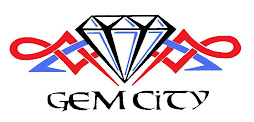Here I will list the arguments against the park I have heard along with the counter-points to those arguments.
The park would require the closing of a city intersection.This park, if it were to come about, would be a major asset to the residents of the third ward as well as the city as a whole. And by placing it on the ballot, it would not be something government was pushing on the city’s people, but rather would be a chance for the people to make their voices heard.
This is true, however, a traffic study was done on that particular intersection, and it was found that very few people actually use that particular section of road. In fact, so few do that a traffic light was removed since all it did was cause unnecessary delays for those traveling on the more heavily traveled cross street. Moreover, there are two other intersections to the south which suffice for traffic needing to turn to either the east or west.
Access to Newburg Landing will be more difficult for emergency vehicles and boats in tow.
According to both fire department and EMT personnel, their vehicles will have no difficulty making the turn from River Avenue onto the road to Newburg Landing. As for boats in tow, the road leading to the landing has two other sharp turns. If a boat can't make the turn from River Avenue, then it won't make these other turns either.
The park would impact the neighborhood.
True again, but the biggest impact would be most likely a probable increase in property values.
There are gas and water lines and probably power cables running under that section of ground which must be accessible.
This would be accounted for by the engineers designing the park. In fact, these could be the most easily accessible cables and lines in town by simply bundling them in a vault with a ground level access point.
Somebody has to pay for the park.
When the idea was last brought to the table, there was a local corporate sponsor. There are also grants as well as private contributions and fund-raisers which could help make the park a reality. Additionally, the idea of additional stimulus money in coming years has been floated in Washington, and I suspect that they will be a reality. This is exactly the type of project that could bring those stimulus funds into Toronto.
In my next installment, I’ll delve further into the idea of the wireless mesh.

